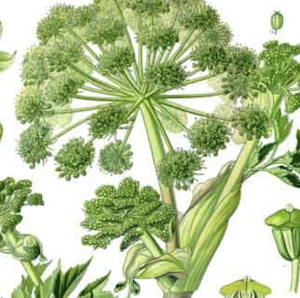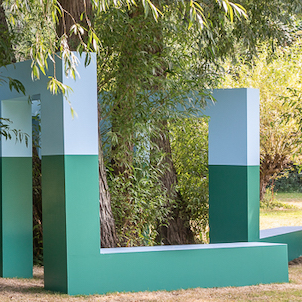Design: Orozco’s Garden and The Hive At Kew
By Jo Phillips
On the 1st of October 2016, the South London Gallery will open a new permanent garden designed by Gabriel Orozco. The garden (Royal Botanic Gardens) has been formed over the past two years by Orozco and 6a Architects and horticulturists, this will be open to the public every weekend including invited groups during the week. There will be a new, planted entrance to the garden for residents of Sceaux Gardens housing estate, where the South London Gallery has run art programmes for some years. The project aims to inspire, attract and connect with large and diverse audiences and marks a decisive movement in the SLG’s history. The South London Gallery is an internationally renowned public institution with several programs of contemporary art exhibitions, films and performance events, which integrate education projects. The designer of the garden Orozco, was born in Mexico and lives and works between Paris, New York and Tokyo. He is seen as one of the leading artists of his generation and he had many international exhibitions, including one at the Tate Modern in London in 2011. This is the first time that he has designed a garden, but he embraced the challenge of transforming this large area of land into a unique sculptural garden. His works usually include sculptures, drawings, photography and video. The works of Orozco are influenced by contemporary urban environments, poetry in unexpected locations and the playful combination of everyday objects. A special feature in his artworks are the circles and they are also carried through to his design for the garden. The materials used in the garden were inspired by the gallery’s Victorian building and they include bricks from the newly opened facade. The whole garden features many different types of grasses and fragrant plants following the urban ruin theme of the garden.
Gabriel Orozco also said that the invitation for the permanent artwork garden was a unique opportunity for him to extend his work. With the garden, he wanted to create a space that is an inspiring platform for the local communities, neighbourhoods, and all kinds of different audiences. He included geometric forms of the surroundings and transferred them into the design of the garden. The supporters 6a architects are known for their famous work with arts organizations and artists, with projects including the award-wining gallery, Raven Row, Sadie Coles in Davies Street, Juergen Teller’s studio and the expansion of Milton Keynes Gallery. From the 1st of October 2016 to the 8th of January 2017, drawings and a film that capture the transformation of the garden over the past year will be presented in the gallery. For more information, check out their website here.
Another stunning outdoor installation in London is “The Hive at Kew”. From June 2016, the Hive takes up its new home within Kew Gardens, after it being the centerpiece of the gold medal winning UK Pavilion at the 2015 Milan Expo. It is designed by Wolfgang Buttress and created by BDP, Simmonds Studio and Stage One. It reaches a height of 17 meters, has a weight of 40 tonnes, and is an immersive, multi-sensory experience inspired by ground-breaking UK scientific research into health of bees. This aluminium structure presents British creativity, innovation and leadership in overcoming global challenges and draws visitors into the space with a wildflower meadow, just like as the worker bees returning to the hive. The structure contains hundreds of glowing LED lights and it also creates beautiful orchestral sounds with undercurrents of buzzes and pulses.
The book “The Hive At Kew” is a celebration of this stunning project and it features many beautiful illustrations and photographs divided into three parts.. The first part is about the origins and the architecture of the Hive and its creation led by artist Wolfgang Buttress. Whereas the second part focuses on the immersion of the Hive at Kew and the surrounding wildflower meadow designed to attract a variety of bees. Leaving the last part of the book explaining the pioneering research into bee health and communications that inspired the Hive, and how Kew is working to help bees in their vital role as pollinators.
“The Hive At Kew” contains many different photographs of the Hive itself, the construction, and the wildflower meadow around it and furthermore, it also features architectural plans of the structure. The Royal Botanic Garden Kew is a world famous scientific organisation which is internationally respected for its outstanding collections and its scientific expertise in plant diversity, conservation and sustainable development around the world. Furthermore, it is a top London attraction with over 1.5 million visits every year and the gardens even have a surface of 132 hectares. In July 2003, Kew was made a UNESCO World Heritage Site and in 2009, it celebrated its 250th anniversary.
More information on the book can be found on the site of Kew Publishing here.







